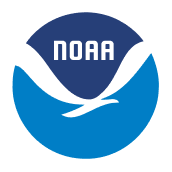Aerosols in wildfire smoke, lofted dust, pollen, and other pollutants cause an estimated 4.2 million fatalities each year worldwide. Improved forecasts of air pollutants help the public avoid hospitalizations and premature deaths from respiratory, cardiovascular, and neurological diseases, and severe allergic reactions, and better forecasts of visibility keep aircraft flying safely and efficiently. GSL develops forecast systems that predict and help the public prepare for these risks.

High-Resolution Smoke and Dust Models

High-Resolution Rapid Refresh (HRRR) Smoke
The HRRR model suite is one of NOAA’s flagship atmospheric models. Updating hourly, and with a 3km resolution across the contiguous U.S., HRRR provides crucial insight to short-term, small-scale conditions for a number of weather variables. As a new addition to the HRRR model suite, in 2020, HRRR-Smoke became operational, providing some of the first–and best–smoke concentration forecasts up to this point. Since its release, HRRR-Smoke has been the go-to for forecasters, public health officials, emergency operations and wildland firefighting managers to visualize the extent and spread of wildfire smoke across the country during fire season.
Rapid Refresh Forecast System (RRFS) Smoke and Dust
The RRFS is NOAA’s next-generation high-resolution, rapidly updating model: the proposed successor to the HRRR. The RRFS model with Smoke and Dust (RRFS-SD) was developed by GSL and NOAA’s Air Resources Laboratory as a module within RRFS that predicts aerosols like smoke and dust. This model provides advanced, hourly-updated forecasts of smoke and dust dispersion across North America using a high-resolution grid, and integrates satellite observations of wildfires to predict near-surface and vertically integrated smoke concentrations. By offering precise and timely information on aerosol concentrations, RRFS-SD aids in managing public health risks and improving visibility forecasts during wildfire and dust storm events.

Pollen Forecasting
Over 50 million Americans experience seasonal allergies due to airborne pollen, costing the workforce millions of work-hours lost nationally. GSL is pioneering experimental forecasts for pollen concentrations in the atmosphere to better predict and help the public prepare for periods of elevated severe-allergy risk. Initially, pollen forecasts were developed within the Rapid Refresh model with Chemistry (RAP-Chem) framework, and in the future, pollen forecast capabilities will be integrated into the RRFS-Smoke and Dust system. These implementations include forecasts for coarse and fine pollen species for tree, grass, and weed. Because pollen generation and the transport of pollen in the air are highly weather-dependent, this is a natural addition to the next-generation forecast model suite.

GEFS-Aerosols
GSL led the development of the Global Ensemble Forecast System – Aerosols (GEFS-Aerosols), NOAA’s operational, global atmospheric composition model that integrates weather and air quality forecasting to produce week-long forecasts of aerosols such as wildfire smoke, soot, organic carbon, particulate sulfate, dust, and sea salt. The model is able to provide both the weather and aerosol forecast at the same time.
NOAA and other agencies use GEFS-Aerosols to make daily aerosol and visibility forecasts for the US and the globe. The model also helps predict the track of enormous dust plumes from the Saharan Desert that lead to persistent haze over the U.S.
GEFS-Aerosols significantly improves predictions of global aerosol composition and variability when compared with NOAA’s previous global forecasts. GEFS-Aerosols has reduced biases (reduction of the global Aerosol Optical Depth bias by 61%) and performs on par with other global aerosol forecasts. Advances made in developing GEFS-Aerosols will inform ongoing work on NOAA’s next-generation operational air quality forecasts to extend predictions out to sub-seasonal and seasonal timescales.
GEFS-Aerosols is a collaborative effort between NOAA’s GSL, Chemical Sciences Laboratory, Air Resources Laboratory, the Environmental Modeling Center and NOAA Satellites.

